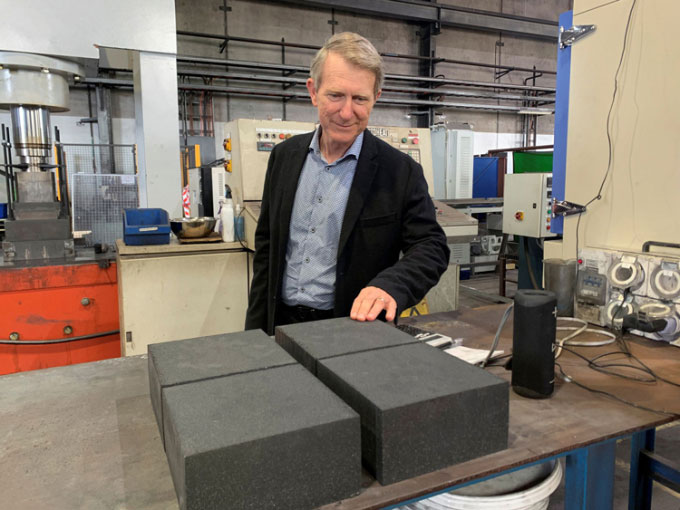MGA bricks are made from aluminum and graphite, with an estimated lifespan of 30 years and capable of storing around 1 kWh of thermal energy per brick.
A team of engineers at the University of Newcastle, Australia, has been granted a patent for a new material used to create bricks and store thermal energy, Reuters reported on October 27. They hope this product will help transform the operations of coal-fired power plants.

Erich Kisi examines thermal energy bricks in Newcastle, Australia, October 2021. (Photo: Reuters/Stefica Nicol Bikes)
The new brick, named Miscibility Gaps Alloy (MGA), is made from aluminum and graphite and can store energy produced from renewable sources. Its estimated lifespan is 30 years. Each brick weighs around 6 kg and contains approximately 1 kWh of thermal energy. Kisi declined to provide a predicted price for each brick.
According to Erich Kisi, co-inventor of the thermal energy brick, the research team came up with the idea of energy storage while studying thermal emission converters—devices that generate electricity from heat.
“The most important material in the brick is aluminum particles, which provide latent heat (the heat absorbed or released by a substance when it changes state, such as from liquid to gas, while the temperature of that substance remains constant). They will flow out and solidify thousands of times throughout the brick’s life but will remain in place. They are held in position by graphite. We have other mechanisms, but graphite is the main component,” Kisi said.
Kisi is the CEO of MGA Thermal, the company producing MGA bricks. MGA Thermal is collaborating with Swiss company E2S Power AG to utilize the new bricks in improving and repurposing coal-fired power plants in Europe. MGA can harness energy from renewable sources (such as wind and solar power), store energy as thermal energy in a cost-effective and safe manner, and then use this energy to run steam turbines in power plants instead of burning coal.


















































